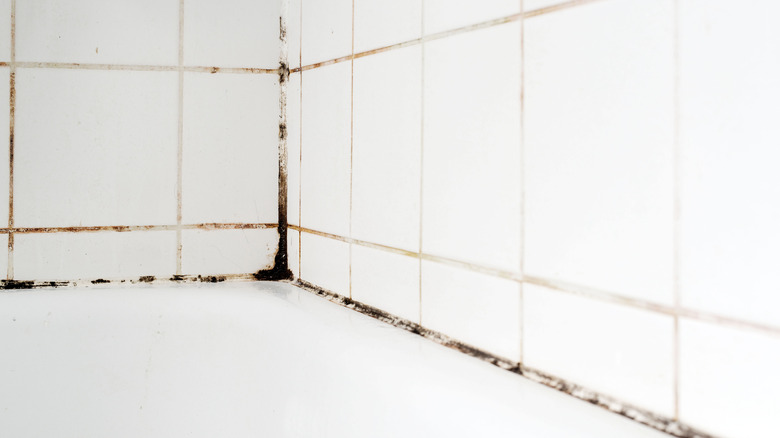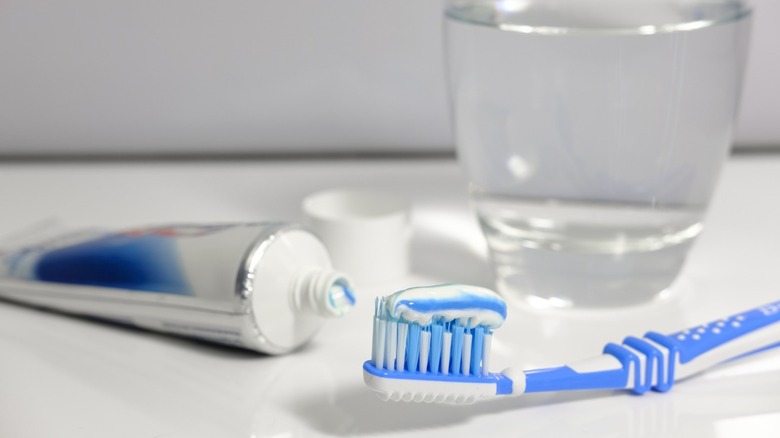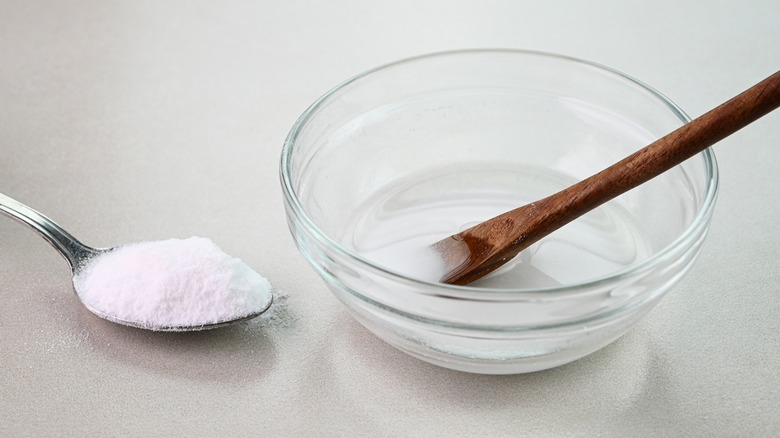Will Toothpaste Really Banish Mold From Your Bathroom (Or Just Make It Moldier)?
The abrasive ingredients in toothpaste, such as calcium carbonate, make this product useful for a variety of cleaning projects around the home. In fact, some believe that certain types of toothpaste are capable of killing mold in the bathroom because they contain hydrogen peroxide as well. However, we haven't found any trusted experts that recommend this hack, and no studies have been conducted to prove that this mold-removal method is effective. Not only that, but it may actually make matters worse if all the toothpaste isn't washed away. When toothpaste is old or left open in a humid bathroom, mold can sometimes grow even within the tube. Therefore, if you try to clean mold with toothpaste but don't rinse it off the surface properly afterwards, it could actually make the space moldier.
If you notice a little spot of mold in your bathroom, you could try scrubbing the area with toothpaste and an old toothbrush before wiping the surface with a damp rag, and you may find that it does lift the stain. However, there is no way to know if it's truly killing the mold spores, so it may not actually be as effective as you might think. For those who want to stop using bleach and are hesitant to try toothpaste, regular hydrogen peroxide can be combined with baking soda to create a mold-fighting paste.
Why toothpaste may not be able to fight mold
Bathrooms are prone to growing mold because of the humidity and dampness, and though toothpaste that contains hydrogen peroxide might be able to make a small difference, it likely won't banish mold from your bathroom completely. Hydrogen peroxide is a common cleaning chemical that's antimicrobial, meaning it can kill fungi like mold. While some toothpastes contain this ingredient, they typically don't contain a large amount of it and are mostly comprised of other ingredients. Therefore, there may not be a high enough concentration of peroxide to effectively fight mold, especially if it's covering your bathroom ceiling or walls.
Furthermore, on top of toothpaste possibly not being very effective, there's also no guarantee that the paste won't damage or stain the surfaces it's used on. While most people who recommend this hack say to use white toothpaste as opposed to dark charcoal or green fluorescent types that may damage the surface, there are still lots of other ingredients in a basic white paste that could be harmful to your bathroom fixtures, walls, or tiles. Using another simple cleaner comes with a guarantee that it will be effective and won't damage your bathroom in the process.
Cleaning bathroom mold with hydrogen peroxide instead
While toothpaste may not be the best option for ridding your bathroom of mold, regular hydrogen peroxide has proven to be effective. A 2013 study published by the Journal of Occupational and Environmental Hygiene found that hydrogen peroxide inhibited the growth of six common fungi. Further, according to the Centers for Disease Control and Prevention, hydrogen peroxide is capable of killing many viruses, bacteria, fungi, spores, and yeast, making it a great disinfectant that's effective against mold. When mixed with baking soda, this ingredient becomes even more effective, as the powder also has some antimicrobial properties and is slightly-abrasive.
To use hydrogen peroxide against mold, start by combining it with baking soda until a thick paste is formed. This mixture is safe to use on most surfaces including grout. If you're concerned about it lightening your walls, try testing your paste on a small spot first. Once your paste is formed, spread it over the moldy spots in your bathroom and leave it there for 10 minutes or longer. Then, use an old cleaning brush or toothbrush to scrub the solution before rinsing the area or wiping it away with a damp cloth. If any visible mold remains after the paste is removed, simply pour a little of your hydrogen peroxide into a spray bottle and spritz it onto the surface. You can let this sit for several minutes before wiping it away with a wet rag.


